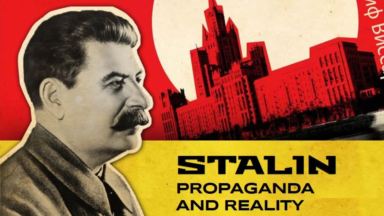RFE/RL Reports: 60 Years After Stalin

 The reign of Josef Stalin was a time of terror, mass executions, brutal collectivization, and war. Sixty years after Stalin’s death on March 5, 1953, historians around the world are still working to uncover the real story of the man who brought the Soviet Union the Gulag, the Great Terror, and forced deportation, and yet still holds the highest approval of any political figure in Russian or Soviet history.
The reign of Josef Stalin was a time of terror, mass executions, brutal collectivization, and war. Sixty years after Stalin’s death on March 5, 1953, historians around the world are still working to uncover the real story of the man who brought the Soviet Union the Gulag, the Great Terror, and forced deportation, and yet still holds the highest approval of any political figure in Russian or Soviet history.
RFE/RL’s coverage provides multimedia analysis on Stalin’s legacy, including:
- Forty hours 30 minutes, 26 stops, and 2,268 kilometers to the end of the line — all without crossing into a new time zone. Correspondent Tom Balmforth takes the train to Vorkuta, a town built around one of the Soviet Union’s most notorious Gulags.
- After the Soviet Union collapsed, instability, conflict, and even war broke out across the vast territory of Eurasia. Much of the violence — which still largely defines the former Soviet space today — is a direct outgrowth of Stalin’s nationalities policies. Correspondent Robert Coalson looks at “Stalin’s time bombs.”
- Anne Applebaum, columnist with “The Washington Post” and author of the 2004 book “Gulag: A History” and last year’s “Iron Curtain: The Crushing of Eastern Europe, 1944-1956,” offers her views about the enduring legacy of the Gulag in Russia.
- What do schoolchildren know about Stalin? The lessons of Stalinism vary widely, and even school textbooks offer contradictory approaches to the dictator’s legacy. In Ukraine, students’ answers on collectivism and communism are shaped by their country’s current political divide. Meanwhile, in Russia — where school is compulsory only until the 9th grade and Soviet history is not taught until the 11th grade — opinions are formed by a different divide. (Video in Russian.)
